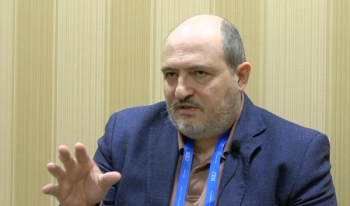
Spectroscopy Probe Could Improve Safety and Effectiveness of Deep Brain Simulation Treatment for Parkinson’s Disease
A new spectroscopy probe can provide real-time information to help doctors navigate inside the brain when placing electrodes for deep brain simulation treatment for patients afflicted with Parkinson’s disease.
There are various treatments used for Parkinson's disease. One of these treatments is deep brain simulation (DBS). DBS is a common treatment for patients with advanced Parkinson’s disease, and it is being used increasingly in the field (1). However, the procedure carries significant risks. A new study conducted by researchers was designed to test whether a new spectroscopic probe can make a DBS procedure safer (1). Here, we highlight this study and mention its findings.
First, it is important to understand the DBS operation more fully. As an operation, DBS is a two-part procedure that involves a surgery to place electrodes in specific parts of the brain and a second surgery to implant a battery pack that delivers electrical current to the electrodes (1). Doctors typically rely on pre-surgery magnetic resonance imaging scans to plan where they will insert electrodes (1). However, these scans are not perfect. In fact, this can sometimes lead to inaccurate placement because the brain can shift by up to 2 mm during the process of drilling an access hole through the skull (1). As a result, placing electrodes in the wrong spot can lead to psychological disorders and reduce the effectiveness of the treatment (1).
This new spectroscopy probe can conduct two types of spectroscopies, which is designed to assist doctors in navigating instruments inside the brain more accurately (1). The desired effect is that this probe would improve success rates (1).
This study was led by Mireille Quémener from the CERVO Brain Research Center at Université Laval in Québec (1). During their study, the research team identified white and grey matter using principal component analysis (PCA), proving that spectroscopic measurements could be suitable for neuronavigation (1).
One of the important steps in this study was developing a DBS electrode that could test the effectiveness of the new probe. To do this, researchers made sure that the DBS electrode was improved with an optical probe to perform coherent anti-Stokes Raman spectroscopy (CARS) and diffuse reflectance spectroscopy (DRS) on brain tissues during the insertion process (1). The probe fits within the DBS electrode and contains two fibers for illumination and a third fiber for collecting signals (1). The optical probe can be removed while the electrode stays in place once the electrode reaches the target position (1).
To confirm the accuracy of the probe, a neurosurgeon used it to implant electrodes in six regions of the brain of a human cadaver (1). CARS and DRS measurements were collected along a total length of 50 mm in each of the brain’s two hemispheres (1). After the procedure, researchers extracted the brain and visually identified the white and grey matter through which the probe had passed (1). Comparing the readouts from the CARS and DRS measurements to the visual record of brain structures, the researchers found the methods identified brain tissue with great accuracy (1).
The researchers plan to study whether the approach could be used to collect even more detailed spectroscopic information, such as to measure neurotransmitters that provide a chemical signature of brain activity (1). They are currently working on adapting the optical probe to use in clinical trials for patients who will receive a DBS surgery (1). Quémener said the team is convinced that optical methods have enormous potential (1).
“Our team is currently working on adapting the optical probe to use it in clinical trials for patients who will receive a DBS surgery. We are convinced that optical methods have enormous potential for surgical guidance, and hope that our technology will emerge in the clinic to assist surgeons in various brain procedures,” said Quémener (1).
To conclude, Mireille Quémener from the CERVO Brain Research Center at Université Laval in Québec and the research team developed an optical spectroscopy probe that could improve the effectives of DBS treatment for those patients afflicted with Parkinson’s disease (1). Most doctors rely on pre-surgery magnetic resonance imaging scans to plan where they will insert the electrodes in the brain; as discussed, the issue was this strategy is that it can result to inaccuracies that diminish the effectiveness of the treatment (1). The newly developed spectroscopy probe is designed to aid in electrode placement, and that could result in higher accuracy and effectiveness at treating patients for Parkinson’s disease (1).
Reference
(1) Optica, Spectroscopy probe could enhance deep brain stimulation procedure for Parkinson’s.
Newsletter
Get essential updates on the latest spectroscopy technologies, regulatory standards, and best practices—subscribe today to Spectroscopy.




